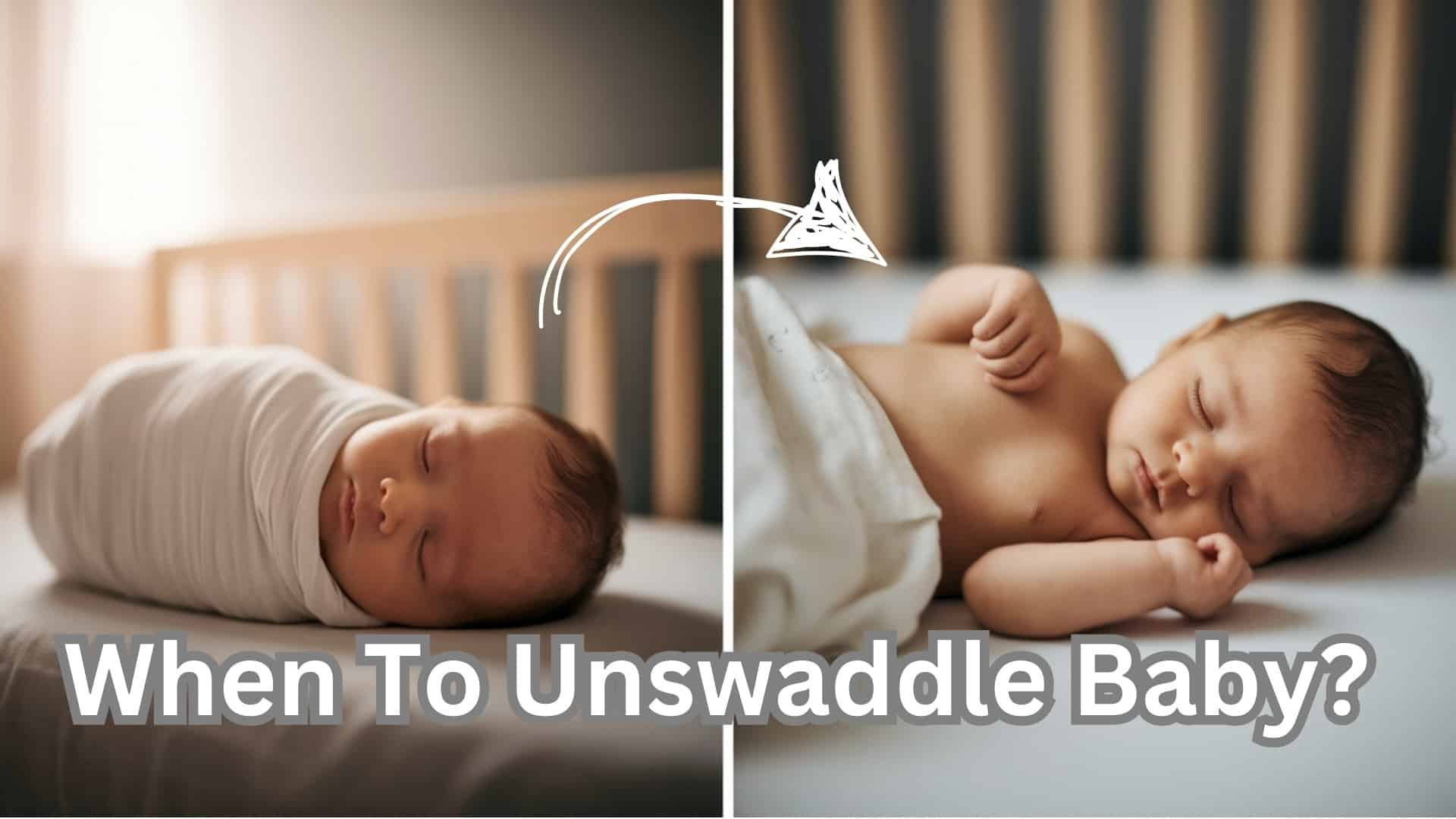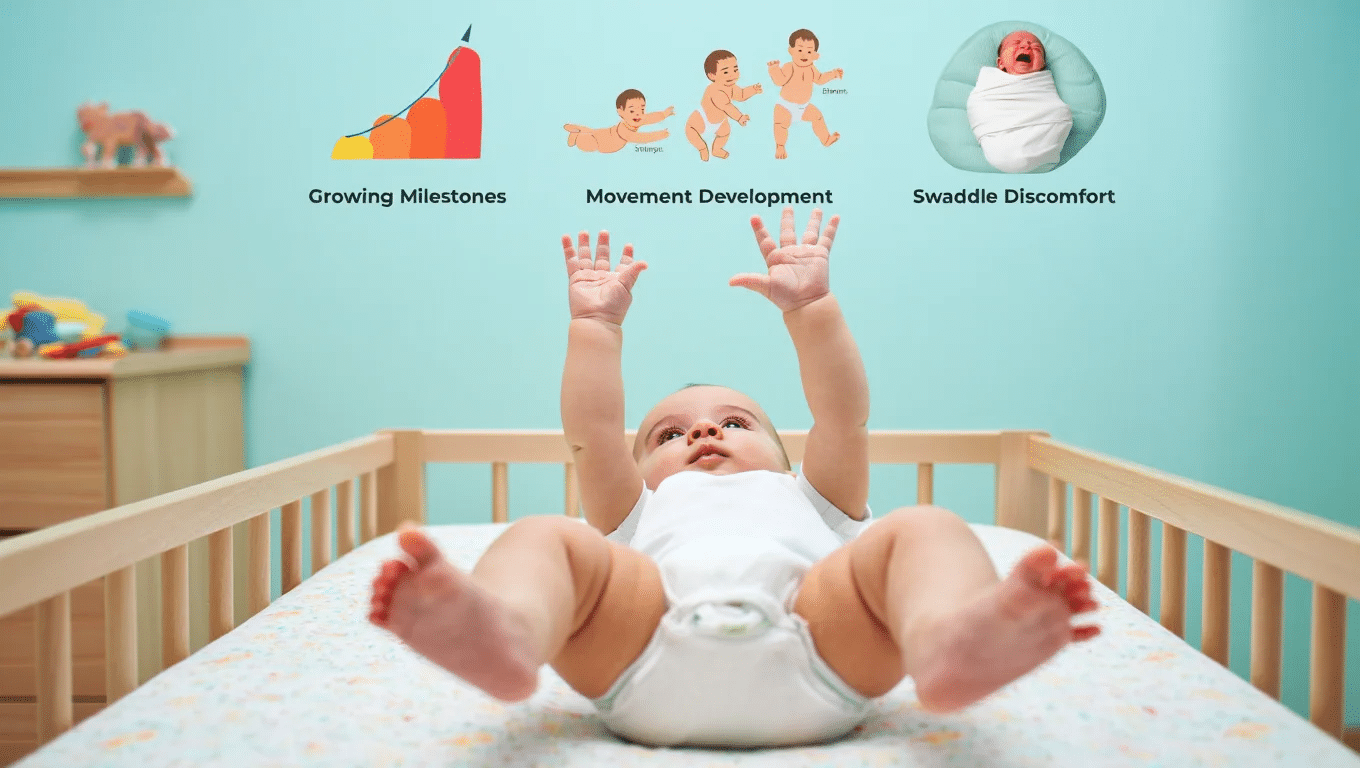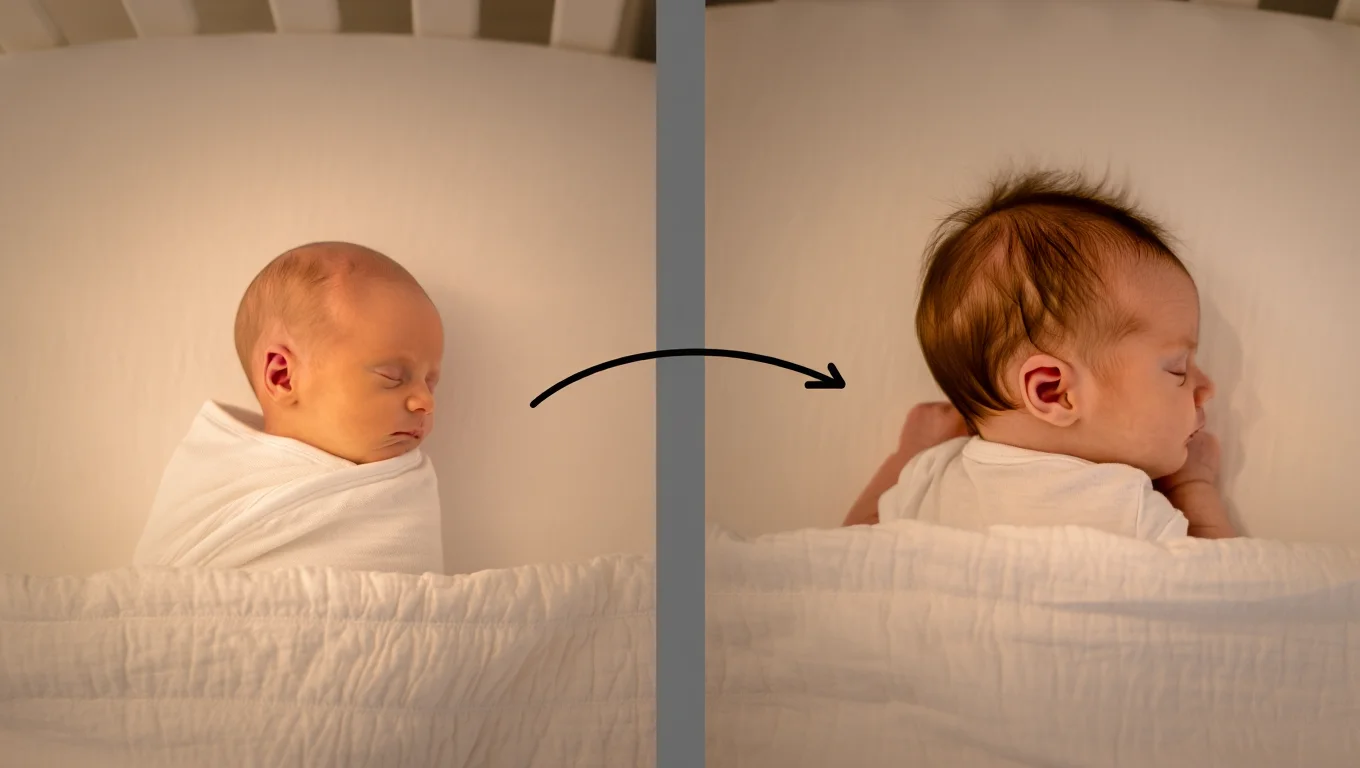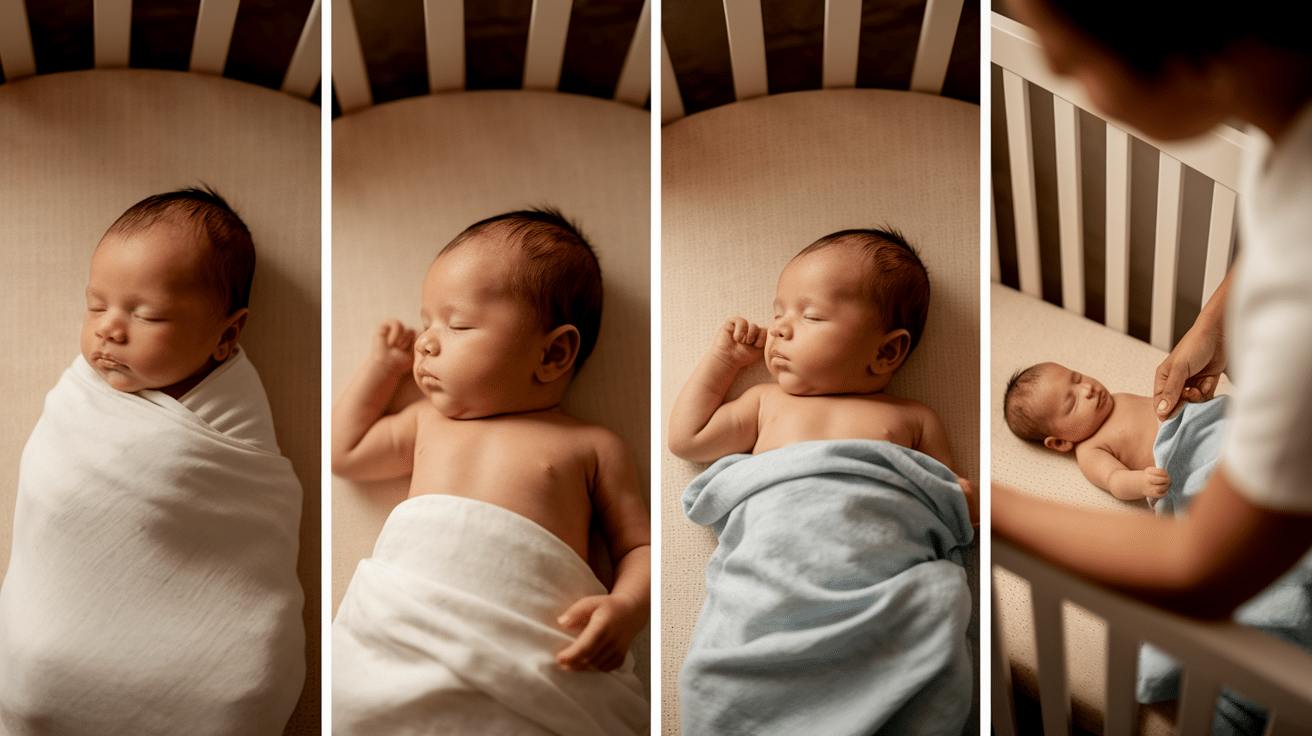
Swaddling wraps babies snugly in blankets, creating that cozy womb feeling they love. It’s like nature’s off switch – stopping those tiny flailing arms from waking them up!
But here’s the thing – your baby can’t stay wrapped like a tiny burrito forever. (Though wouldn’t that make diaper changes easier?)
As babies grow, swaddling can actually become unsafe and slow down their important movement milestones. Knowing when to free those little arms keeps your baby safe and supports their development.
Let’s unwrap the mystery of when to unswaddle, why it matters, and how to make this transition without turning bedtime into a tiny protest rally!
Why Swaddling Works for Newborns?
Swaddling helps babies feel safe and calm during their first weeks of life. The snug wrap mimics the tight space of the womb, giving newborns a familiar feeling.
This gentle pressure reduces the startle reflex that often wakes babies suddenly. Many parents find swaddled babies sleep longer and more soundly.
As babies grow, swaddling needs to change. Their arms may need more freedom as they develop control of their movements. The wrap should be looser around the hips to allow healthy joint development.
What Happens If You Over-Swaddle?
Swaddling too long or too tightly can cause problems. Babies might get too hot, which is unsafe for sleep, and tight swaddling around the legs can affect hip growth.
The biggest risk comes when babies learn to roll over—a swaddled baby who rolls onto its stomach cannot use its arms to adjust its position.
Key Signs It’s Time to Unswaddle

While swaddling provides comfort for newborns, all babies eventually outgrow this need. Recognizing the right moment to transition away from swaddling keeps your baby safe and supports their development.
- Age milestone: Most babies are ready to transition out of swaddling between 2 and 4 months old. This is when the startle reflex naturally begins to disappear.
- Rolling over: Once a baby can roll from back to tummy, swaddling becomes unsafe. A swaddled baby who rolls onto their stomach cannot use their arms to push up or adjust their position.
- Breaking out: When babies consistently escape their swaddle, they show they need more freedom to move. This is their way of communicating that they’re ready for the next step.
- Sleep disruptions: As babies grow, they may actually sleep worse when swaddled. They need to practice self-soothing and may become frustrated by the restriction that once helped them sleep.
Watching for these signs helps parents make the transition at the right time, keeping the baby safe and comfortable as it continues to grow.
The Best Time to Transition

Most babies are ready to stop swaddling between 3 and 6 months of age. This is an average timeframe, and your baby’s actual transition age may differ based on their development and individual needs.
Always watch for the signs mentioned earlier to determine when your baby is truly ready for this important change.
Some babies need to transition earlier if they start rolling over, which typically happens around 2-4 months.
Others might benefit from swaddling a bit longer if they still have a strong startle reflex or sleep poorly without the security of the swaddle.
The American Academy of Pediatrics (AAP)strongly recommends stopping swaddling as soon as your baby shows signs of trying to roll over.
Once babies can roll, swaddling becomes unsafe as it restricts their ability to move freely and potentially into safer positions during sleep. Safety should always be the top priority when making this decision.
How to Transition Out of Swaddling?

Transitioning your baby out of swaddling is a gradual process that helps them adjust to sleeping with more freedom. Following these simple steps can make this change easier for both you and your baby.
- Begin by freeing one arm from the swaddle for 2-3 nights, allowing your baby to get used to having some movement.
- Next, release both arms while keeping the torso wrapped snugly for several nights.
- Finally, remove the swaddle completely and use a sleep sack or age-appropriate blanket instead.
- Help soothe your baby during this change with white noise, gentle rocking, or a consistent bedtime routine.
- Expect some changes in sleep patterns at first. Stay patient and consistent – most babies adjust within 1-2 weeks.
Remember, every baby is different, so move at your child’s pace and celebrate each small step toward independent sleeping.
Safety Concerns While Unswaddling
Parents should prioritize their baby’s safety when transitioning away from swaddling. These tips help ensure a smooth and secure transition for your little one.
- Always place baby on their back to sleep
- Use a sleep sack as a safe alternative to swaddling
- Make sure the room temperature is comfortable (68-72°F)
- Remove loose blankets and toys from the crib
- Monitor for signs of rolling during the transition period
- Consider unswaddling one arm first before fully stopping
- Keep nap and bedtime routines consistent
Maintaining these safety practices helps babies adjust to sleeping unswaddled while giving parents peace of mind during this important developmental transition.
Should You Consult A Pediatrician?

Most parents can safely transition their baby out of swaddling without medical advice. However, you should consult a pediatrician when you notice these signs:
- Your baby has delayed motor development or isn’t trying to roll over by 4 months
- Your baby seems uncomfortable or unusually fussy after being unswaddled
- Your baby shows signs of sleep regression that lasts more than a week
- Your baby has unusual startle reflexes that persist beyond 5 months
- Your baby has any physical conditions affecting movement or comfort
Remember, pediatricians are there to help with your baby’s developmental stage.
While unswaddling is a normal transition, getting professional advice when needed ensures your baby stays safe and comfortable during this change.
Final Thoughts
Knowing when to unswaddle your baby is an important step in its development. Remember the key points discussed, make changes accordingly, and, most importantly, be patient.
Every baby is different. Trust your instincts and pay attention to what your baby tells you through their behavior.
Some babies are ready earlier, while others might need swaddling a bit longer. Also, remember that safe sleep habits remain important even after unswaddling.
Always place babies on their backs to sleep, keep the crib free of blankets, toys, and bumpers, and ensure the sleep environment remains at a comfortable temperature.
If you’re interested in more informational content on mothers and babies, feel free to click here and explore other blogs that you might enjoy.

